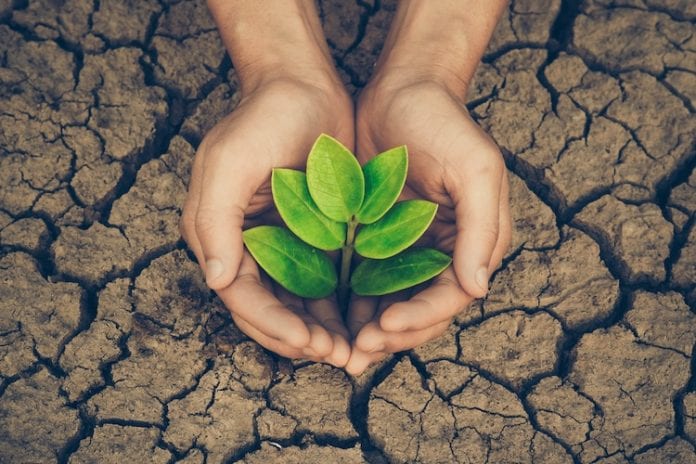The world is experiencing many environmental challenges. If you want to be part of the solution and stop being part of the problem, this is a list of easy and useful suggestions that can guide you to have a healthy and eco-conscious lifestyle. Start achieving your goals now.
The statistics of environmental pollution and the evidence on global warming are overwhelming. It is to the extent that it is sometimes tempting to assume that there is nothing we can do to improve the situation. But nothing is further from reality. Some of the essential environmental efforts include conserving energy and reducing water and meat consumption, and we can all do that in our daily lives.

You don’t have to do anything against your will, but if you want to be part of the solution and stop being part of the problem, this is a list of easy and useful suggestions that can guide you to have a healthy and eco-conscious lifestyle.
- Be more responsible with your trash and identify where your everyday waste will end up: start recycling. Also, there are many benefits of using a garbage disposal. If you want to contribute to green living, kitchenhomelet.com has a solution. There you will find some of the best and quietest garbage disposals on the market.
- Do not buy more plastic containers, reuse the ones you have (stop buying water bottles, especially).
- Use cloth or paper bags for everything you can. Avoid plastic wrap as much as possible. In the US, 100 billion plastic bags are used and discarded each year. Reducing that number would be of great help to the planet.
- Avoid wasting food, be more orderly when buying, and do not discard fruits or vegetables that look imperfect. If you prefer seasonal products, develop the habit of reading expiration dates (not to throw away food that is still in good condition). Share your leftovers with others.
- Choose products with a low carbon footprint, that is, locally produced. That means that less carbon dioxide has been emitted. That implies the process of transport from the place of production to your hand. You could even try to plant your vegetables if you have enough space for that.
- Learn that you don’t need everything to be new. Buy clothes and furniture from the “thrift stores.” Take advantage of garage sales, yard sales, and stoop sales (depending on where you live).
- Print as little as possible. Request that the stationery be sent to you digitally to avoid unnecessary printing.
- Stop using plastic straws. Every day more than 500,000,000 plastic straws are used in the United States that end up in garbage cans a few minutes later and last for decades in the environment. If for some reason, you feel that you need them, there are bamboo straws that can be purchased and are reusable.
- Instead of regularly spending money to buy new clothes or shoes and get rid of the old ones, exchange them with your friends.
- Inspect your home to avoid water leaks or unnecessary electrical expenses.
- Order your monthly itinerary to use the washing machine fewer times. Prefer the cold water cycle. Also, take advantage of hanging your clothes just out of the dryer. This way, you could save yourself a few hours of ironing a year.
- Reduce your shower time by a couple of minutes and urinate in the shower whenever you can. Depending on the potty, every time you pull the chain, 6 liters of water go away.
- Avoid using your car at least one day a week or ask to work from home. Walk or use the bicycle if you need to cover shorter distances.
- Volunteer in a national park or participate in beach cleaning. You will make new friends and discover the natural beauty around you.
- Eat slower and if you can, in good company. Enjoy your food consciously. You will eat less, and you will choose better.
- Reduce meat consumption. Livestock production contributes about 15% of the generation of greenhouse gas emissions.
- Adopt a living being: a tree, a plant, or an animal and try to give it food and care throughout the year.
- Inspire others to commit too. Share these suggestions with them.
How to increase the environmental awareness of citizens?

World Environment Day is an excellent opportunity to discuss how to increase citizens’ environmental awareness. To answer this question, we already have enough information from qualified studies that indicate several things. The first is that environmental problems are not all the same. Their perception and impact on the lives of citizens vary. Those problems can be macroecological (climate change, hole in the ozone layer, loss of biodiversity, etc.). But they can also be microecological (drought, fire, pollution, lack of green areas in cities, etc.). Both are indeed related, but the citizens usually perceive them separately.
These works also tell us that it is necessary to distinguish between the problems of the “green” environment (nature, rural areas, agriculture), “gray” (cities and urban environment), and “brown” (industry). Although they are interrelated, they respond to different logics that should be separated to analyze them from the perspective of environmental awareness.
The third thing they indicate is that environmental awareness is the joint result of several dimensions: affective (concern), cognitive (knowledge), and behavioral (behavior). And they tell us that, on each of these dimensions, public policies can act with sanctioning, sensitizing, or incentive measures.

Environmental awareness can be increased through awareness campaigns organized by public powers in collaboration with civil society organizations (citizen platforms, professional associations, ecological movements, etc.). These campaigns are useful to improve citizens’ awareness and sensitize them to the importance of caring for the environment.
But on many occasions, they are insufficient to modify people’s’ behavior, and punitive measures are therefore necessary that compel citizens to alter their behavior for fear of being penalized (landfills, selective collection of urban solid waste, etc.) or incentive measures based on obtaining some reward (consider the installation of solar panels in buildings or the introduction of sustainable agricultural practices, etc.).
In short, to continue advancing in the environmental awareness of citizens, the cooperation between citizens and public powers is necessary. But it is equally essential that awareness campaigns are carried out in a differentiated way according to the type of environmental problem in question, and also according to the target audience to which they are directed.
It is not the same to educate school-age children on environmental issues as it is for young adults or the elderly. Nor is raising awareness about saving water at home the same as raising awareness about consumption in agriculture or industry. It is also different to educate the population about the problems of climate change or to do it about air pollution, forest fires, the deterioration of natural spaces or the extinction of species, and the loss of biodiversity. Each problem requires a type of action, and each audience needs a different language of communication.









